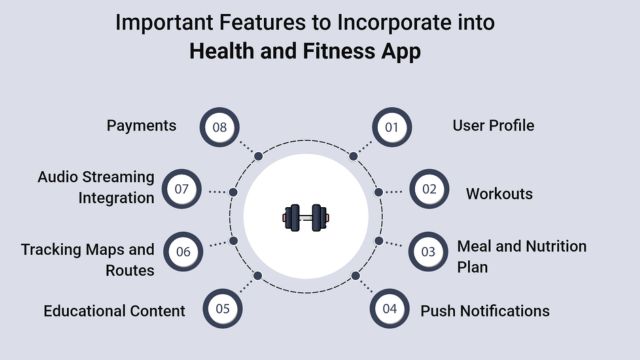Health and wellbeing are more easily available than they have ever been in the fast-paced digital environment of today. Thanks to the growth of mobile technology, people can now track eating patterns, monitor their physical activity, manage chronic diseases, and even see doctors—all from their cellphones. This area has developed two separate categories: medical wellness platforms and fitness apps. Though they have different uses and satisfy different demands, both seek to enhance health.
Anyone trying to make the best decision about their health path must first understand their basic differences.
What Are Fitness Apps?
Fitness apps are primarily designed to help users track and improve their physical activity. These apps typically offer:
- Guided workout routines
- Step counting and distance tracking
- Calorie and nutrition monitoring
- Goal setting for weight loss, strength, or endurance
- Integration with wearables like fitness bands and smartwatches
Those who like a do-it-yourself method to remain active and fit find especially appealing fitness apps. Often including user communities for extra help, they promote regularity and offer motivating alarms.
Benefits of Fitness Apps:
- Easy to use and widely available
- Often free or low-cost
- Encourages self-monitoring and accountability
- Can improve exercise adherence through gamification
Limitations of Fitness Apps:
- Generic advice not tailored to individual medical conditions
- Lack of professional supervision
- Risk of incorrect exercise execution or overtraining
- Minimal support for mental or emotional wellness
What Are Medical Wellness Platforms?
Medical wellness platforms take a more comprehensive approach to health. These digital tools integrate clinical oversight, personalized data, and broader wellness services. Key features may include:
- Virtual doctor consultations and therapy sessions
- Digital health records and lab report access
- Chronic disease management plans (e.g., for diabetes, hypertension)
- Mental health assessments and counseling
- Health monitoring tools and medication reminders
Medical wellness programs are generally created with the help of medical specialists unlike fitness apps. For those seeking evidence-based preventive care or those juggling ongoing medical concerns, they are perfect.
Benefits of Medical Wellness Platforms:
- Personalized health recommendations
- Access to licensed medical professionals
- Centralized health data management
- Mental and physical health integration
Limitations of Medical Wellness Platforms:
- May require paid subscriptions
- Some platforms have regional or provider-based restrictions
- Less entertainment-oriented compared to fitness apps
- Requires more consistent data entry and engagement
Key Differences at a Glance
| Feature | Fitness Apps | Medical Wellness Platforms |
|---|---|---|
| Focus | Physical activity and lifestyle | Comprehensive medical and wellness care |
| Target Users | General public | Individuals with or at risk of health conditions |
| Professional Involvement | Minimal or none | Often includes doctors or specialists |
| Customization Level | Generalized advice | Personalized care plans |
| Core Features | Workout guides, tracking tools | Virtual care, medical records, chronic disease management |
Which One Is Right for You?

Choosing between a fitness app and a medical wellness platform depends on your personal goals, current health status, and the level of support you require.
A fitness app is best for you if:
- You are generally healthy and want to stay active
- You prefer self-guided workouts and nutrition plans
- You are motivated by tracking tools and daily goals
- You do not require clinical intervention
A medical wellness platform is better suited if:
- You have a medical condition or ongoing treatment plan
- You need personalized advice from licensed professionals
- You are interested in integrating mental and physical health
- You want secure access to medical records and lab results
Can You Use Both?
Yes, and many others do. Combining a medical wellness platform with a fitness app can present the best of both worlds. For instance, you might rely on a wellness platform to control your blood pressure and communicate with your doctor while tracking your daily steps and workouts with a fitness app. Many platforms are starting to combine capabilities as digital health tools develop to offer more consistent experiences.
Final Thoughts
Great aids for being active, developing good habits, and preserving general heath are fitness apps. Conversely, medical wellness programs provide professionally supported, regimented, and customized health assistance. Your required type of information and care will determine which of the two best fits you.
Knowing which platform fits your lifestyle and health requirements will enable you to make better, more wise decisions in a time when digital technologies are changing our approach to healthcare. Whether you are treating a health issue or monitoring your workouts, the correct digital tool can enable you to take charge of your well-being unlike anything else.
Get access to real-time news, wellness tips, and simplified government initiatives. Whether you’re looking to understand a scheme or improve your digital health awareness, Digital India MIB is your reliable partner in navigating India’s digital and wellness ecosystem.













